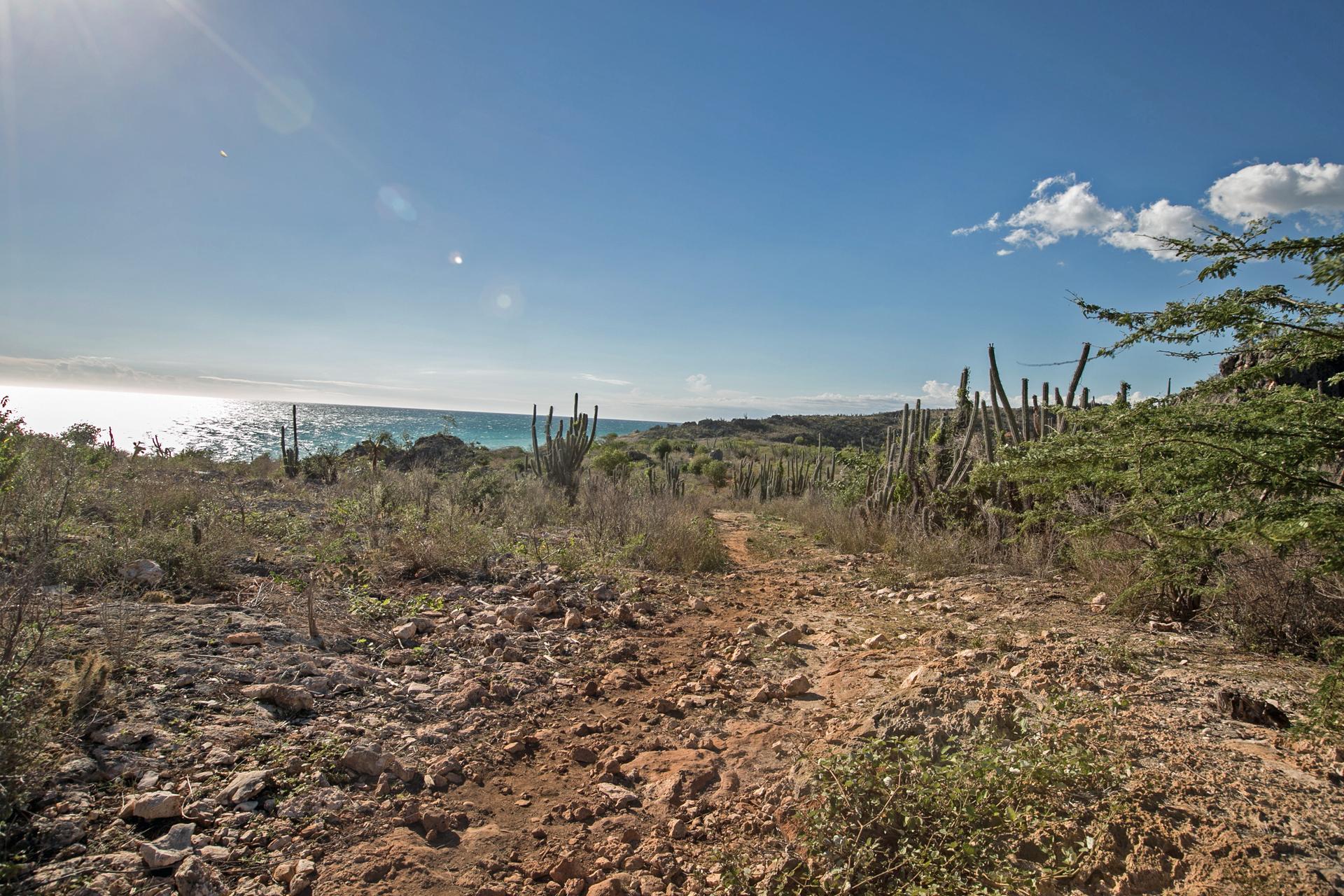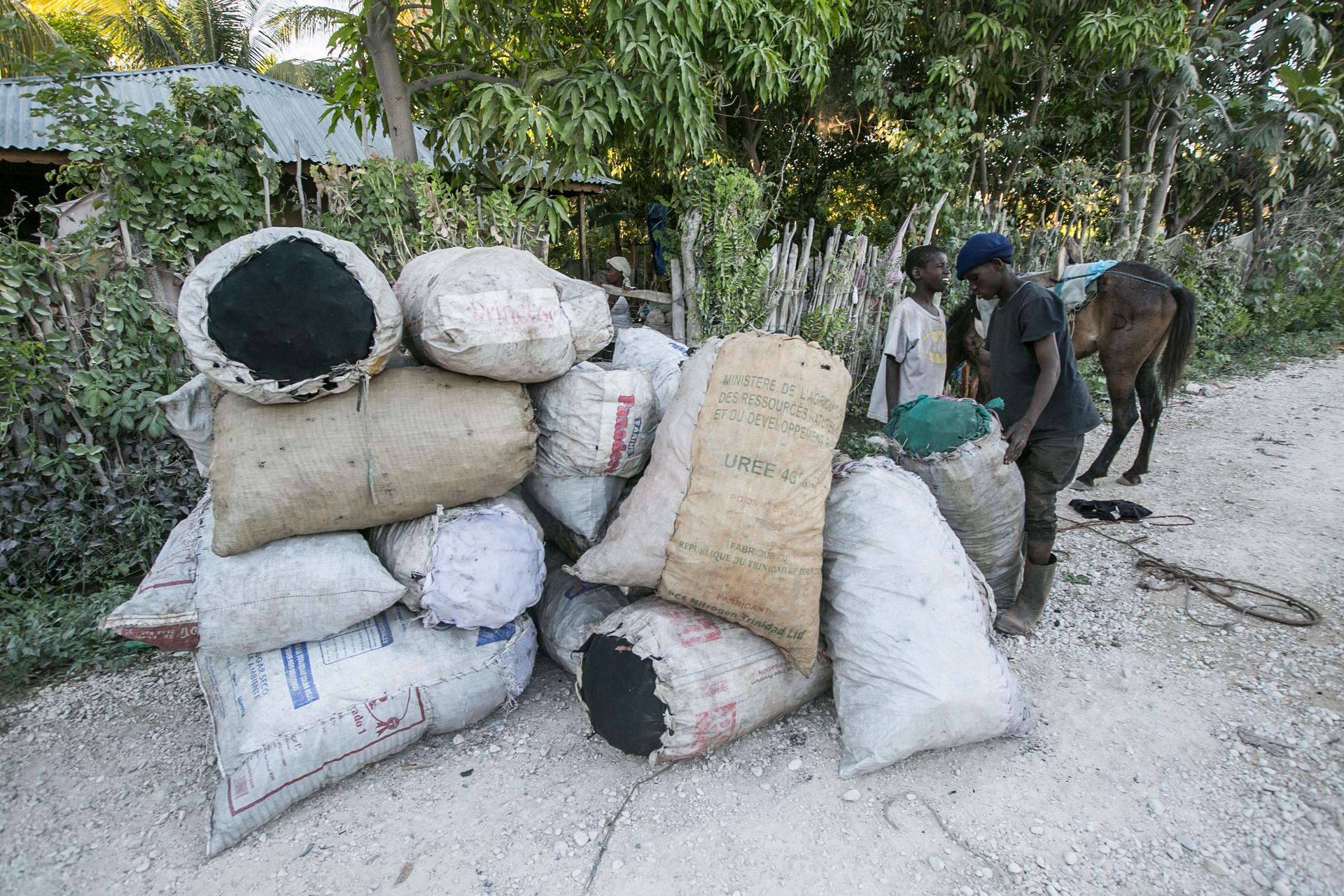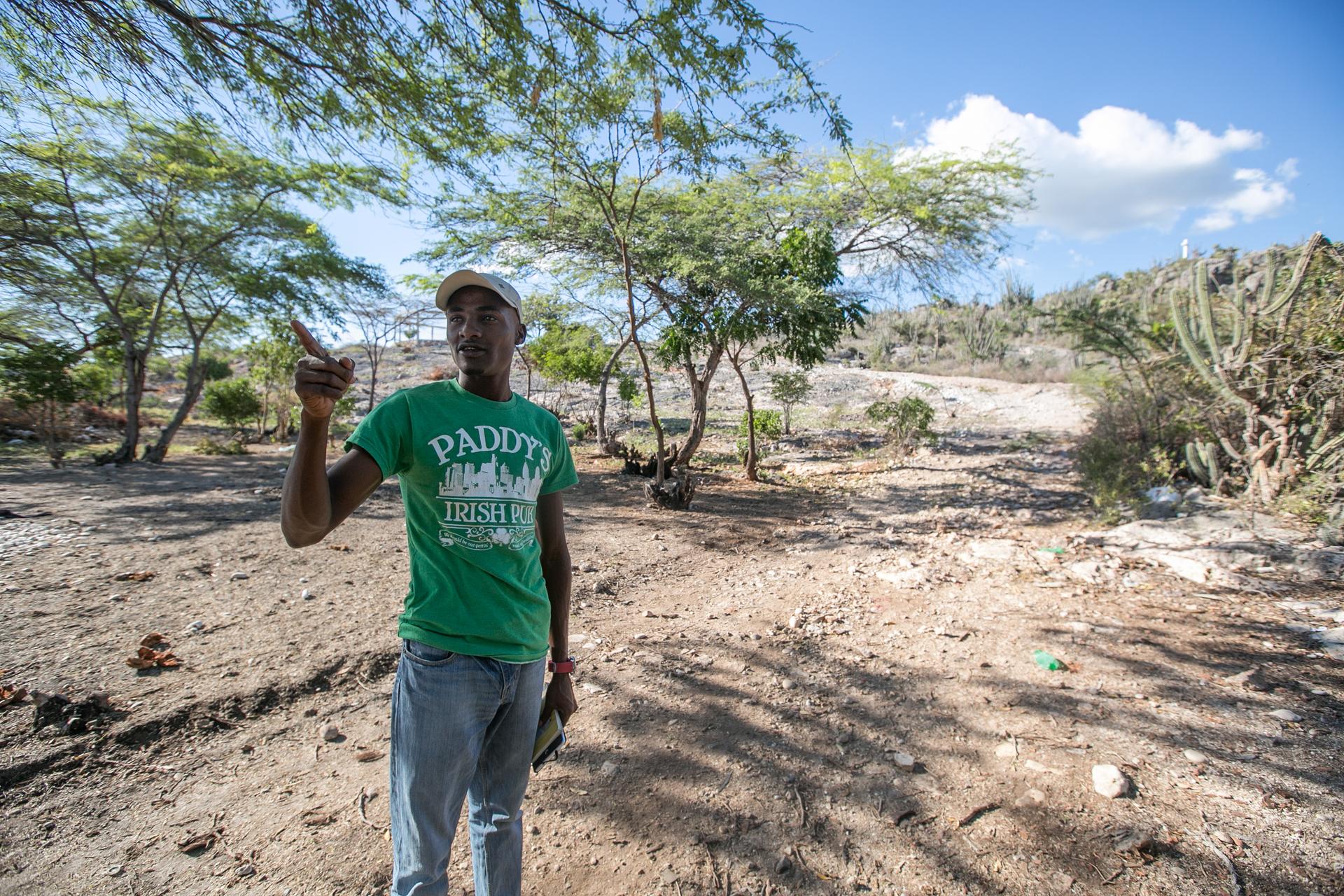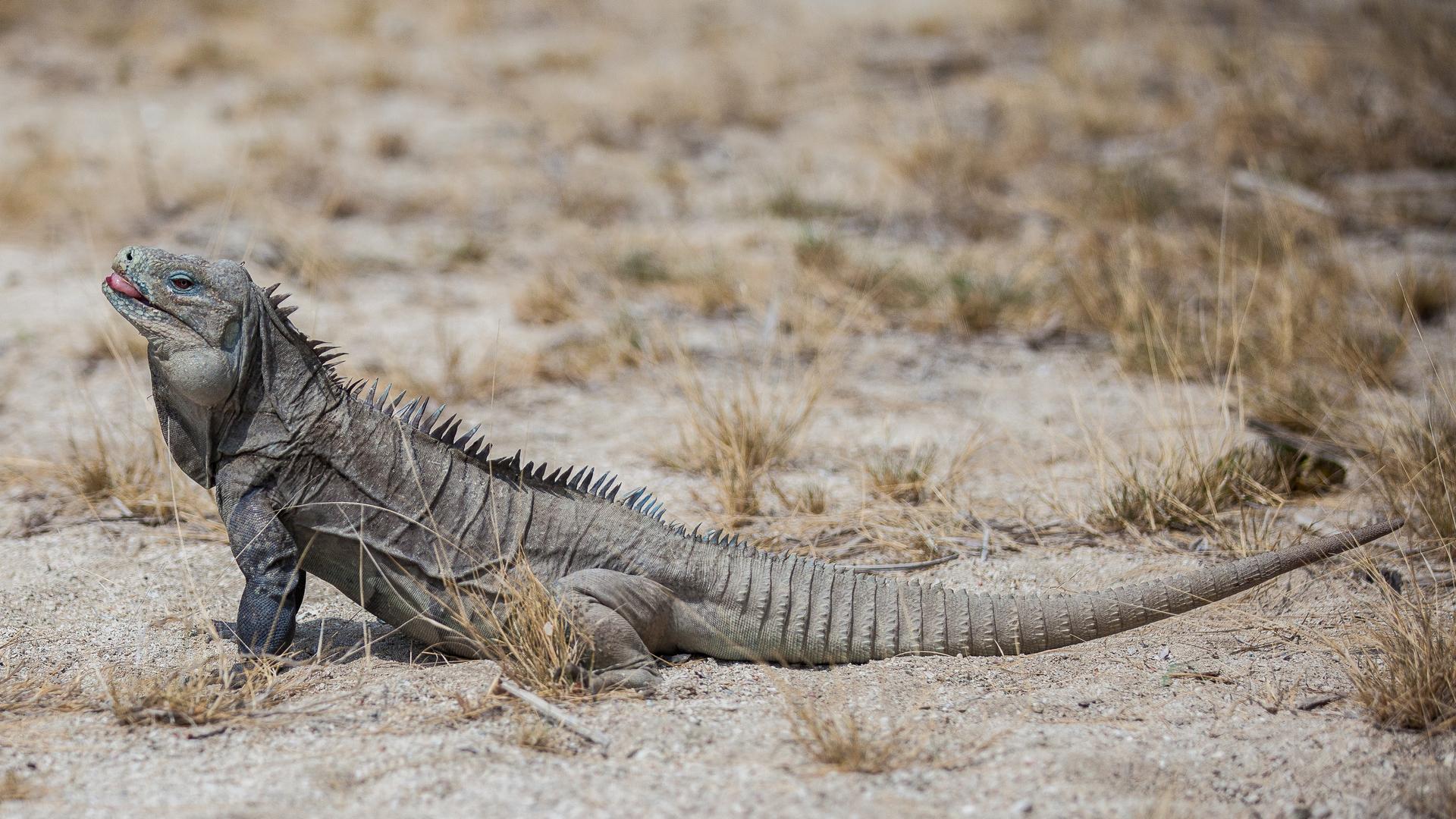Where human life is precarious, Haitians look out for a rare Iguana
The Ricord's iguana, which lives only on the island of Hispaniola, was thought to be extinct in Haiti until a small population was discovered in the southeastern corner of the country eight years ago. Now the three foot-long lizard is the subject of a rare conservation effort in the country.
On a Saturday morning on Haiti’s south coast, just over the border from the Dominican Republic, Pierre Richard Sanon and Tinio Louis scratch around in the dry, sandy soil in the dappled light beneath some small trees. They’re local youth conservation workers, and they’re pointing out the nesting spot of a Ricord’s Iguana.
The mother iguana buries her eggs here, they explain, and after three months, the little hatchlings emerge from the earth.
The babies would be impressive-looking, with grey-green armor, spikes along their backs, and menacing claws. As adults, they could grow to be three feet long.
The Ricord’s Iguana lives only on Hispaniola, the island shared by Haiti and the Dominican Republic, but even here you’re not likely to see one. It’s critically endangered on the whole island, and it was thought to be extinct here in Haiti, until a nest was found right here eight years ago, on a hilly stretch of sand and rock in the town of Anse-a-Pitres, running along a cliff overlooking the Caribbean Sea.

As they walk, Sanon and Louis point out hidden caves, birds, tiny iridescent lizards, a giant caterpillar, shrubby trees and cacti bearing fruit they call "iguana candy." Many of these trees were planted by the two young men themselves, as part of a reforestation program designed to protect what it turns out could be a local population of up to 500 Ricord’s Iguanas.
Today, the iguanas might face a greater chance of survival thanks to a young Haitian American woman named Masani Accimé, who was leading a very different life in Manhattan before moving here.
“I was working as an emergency veterinarian, treating dogs and cats with Gucci collars, and in the Prada bag,” Accimé says. “And then I received an email from Ernst Rupp, who actually discovered the sub-population of iguanas here, inviting me to come here to work in this community where there’s no electricity.”
Accimé had worked with iguanas in a zoo, and had been interested in wildlife work. But she says the real draw was the opportunity to do something positive for a country she still considered home.
She landed a grant from a foundation and began recruiting volunteers, such as Louis and Sanon, to patrol the area, plant trees, and speak with local residents about threats like hunting the iguana for meat, and cutting trees for charcoal. She also convinced local politicians to set aside almost 20 square miles for protected iguana habitat.
Accimé also had eager collaborators in a conservation organization across the border in the Dominican Republic, called Grupo Jaragua — with whom Ernst Rupp works. Accimé says that collaboration was remarkable given how bad relations have gotten between the two neighbors.
“They haven’t been willing to see a border,” she says of her Dominican partners. “They’ve been willing to see that the species actually don’t have a border, and they need to survive, and that’s it.”
In a country like Haiti, where environmental destruction seems an intractable problem in the face of unrelenting human misery, the accomplishments by Accimé and collaborators on behalf of a lizard are impressive. But they hardly guarantee long-term success, and the challenges are huge, from unrelenting poverty and superstition about reptiles, to distrust of NGOs, and Haiti’s political chaos.
Accimé says what’s needed most is a national law protecting the iguana. But the government in Port-au-Prince is barely functioning, and similar dysfunction locally makes it worse. A while ago she was close to convincing the mayor of Anse-a-Pitres to push the cause in the capital, but then the mayor was ousted, Accimé says.
She says a new mayor came in four months later and told her, "‘well, I don’t know anything about your work, there’s nothing in the office that shows you’ve been working here.’ And I’ve been bringing documents and holding meetings and workshops for years.”
Accimé regrouped, and she seems to have made progress with the town’s new interim mayor, Mikellange Morland.
“Personally, I would like to see the iguana habitat protection put into law,” Morland says. “And I believe the government wants to as well.”
But Morland also thinks a new law can only go so far.
“You have to look at the feasibility,” the mayor says. “If I say I’m going to arrest anyone who cuts trees, but today there are people cutting trees to survive, how can I give them a way to survive without cutting trees?”

But Morland believes Accimé’s efforts have helped improve public understanding of the benefits of protecting the iguana and its habitat.
Accimé explains that the iguana can help restore the local forest by spreading and fertilizing seeds through its scat. She also hopes it could help foster eco-tourism here. Meanwhile, her volunteers are ready to give training and supplies to help locals switch from chopping trees and selling charcoal to new sources of income, like beekeeping.
Still, Accimé is growing weary of the challenges.
“I don’t know whether or not this will work,” she says, “because as we’ve seen, many, many, many projects have been failing in Haiti.”
After working in Anse-a-Pitres for the better part of seven years, the Haitian American veterinarian is now planning to turn the iguana project over to her protégés and hope for the best.
“The only way that I think it will take hold is if individual people have an interest in it,” Accimé says. “I think these young people do. So hopefully they’re stakeholders now, this is their work."
“I think there’s a high likelihood that this could fail, but a small chance that it could succeed. It’s been worth a try.”

